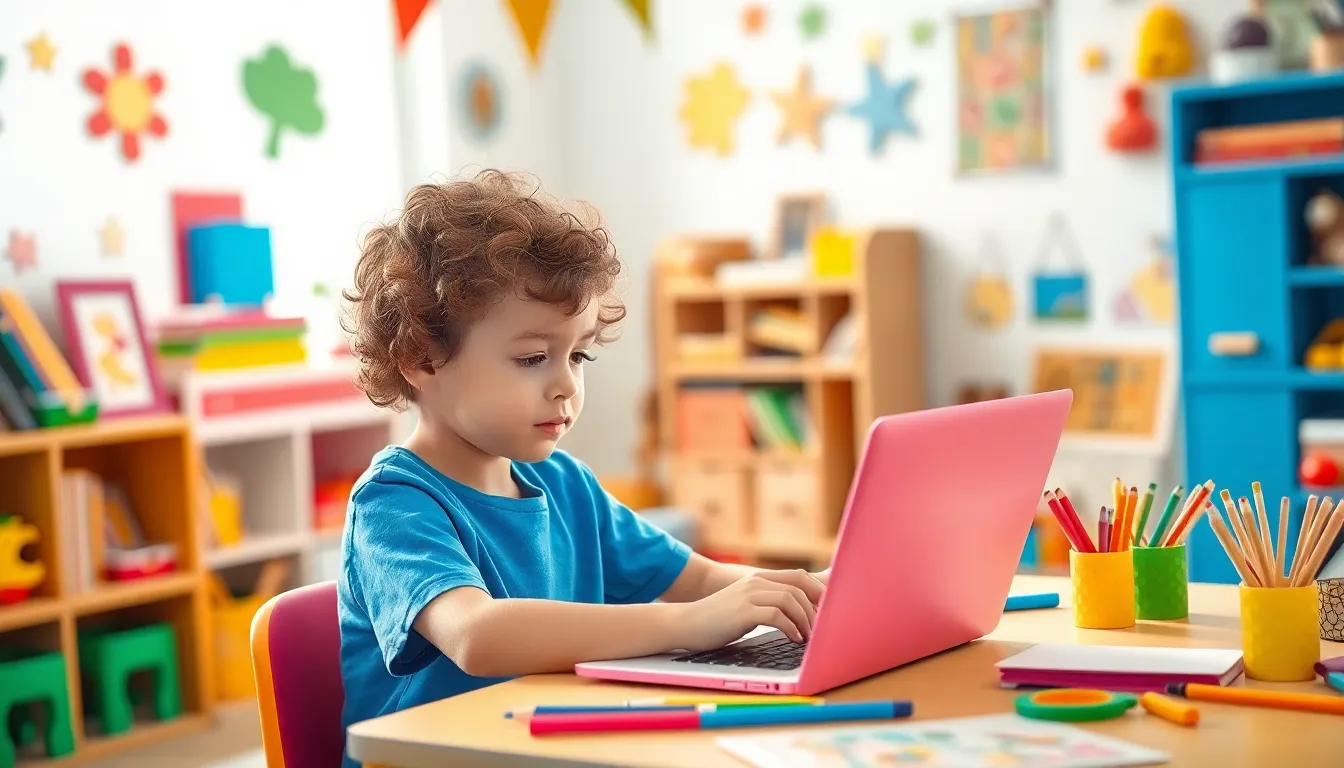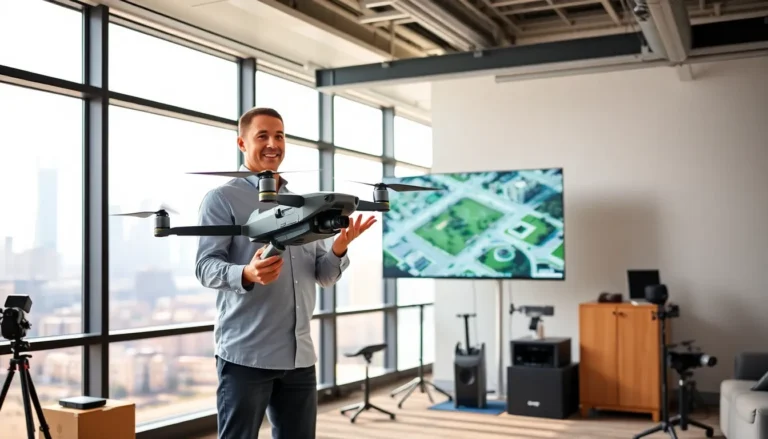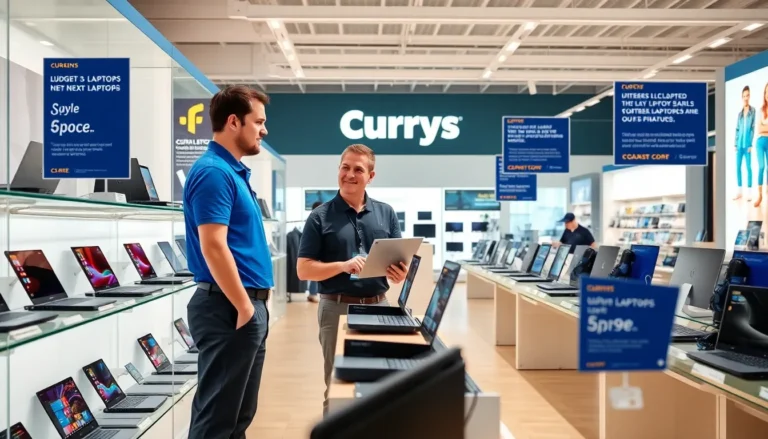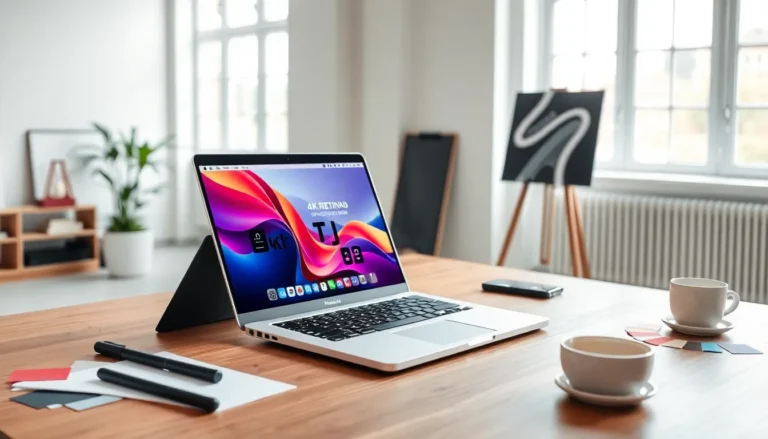In a world where kids are more tech-savvy than their parents, finding the right laptop for them can feel like searching for a unicorn in a haystack. The right kids’ laptop isn’t just a device; it’s a portal to creativity, learning, and the occasional cat video obsession. With so many options out there, it’s easy to get lost in a sea of specs, colors, and features that promise to make homework feel like a walk in the park—if only it were that simple!
Parents want a reliable device that can handle everything from math homework to epic Minecraft battles. But how do you choose a laptop that’s durable enough to withstand the occasional snack attack and powerful enough to keep up with their wild imaginations? Buckle up as we dive into the world of kids’ laptops, where fun meets functionality and every keystroke could spark the next great invention.
Table of Contents
ToggleOverview of Kids Laptops
Kids’ laptops serve as valuable tools for learning and entertainment. Various features define suitable models for children, including durability, performance, and user-friendliness. A good choice supports both educational functions and recreational use, meeting children’s diverse needs.
Recommended specifications for kids’ laptops typically include lightweight designs, long battery life, and robust construction. Many brands focus on creating devices that withstand everyday use, with keyboards resistant to spills and screens made to endure minor impacts.
Parents should also consider operating systems. Chromebooks, for example, provide fast performance and easy access to Google applications, making them ideal for school projects and homework. Windows laptops offer broader software compatibility, particularly for specialized educational programs and games. Tablets can also fulfill kids’ needs by combining portability with touchscreen functionality, allowing for a more interactive experience.
Pricing varies considerably based on features and designs. Budget-friendly options often cost between $150 and $400, delivering essential capabilities. Mid-range models, priced from $400 to $800, typically include better performance and longer lifespans, making them suitable for older children or specific academic needs.
Some popular brands include Lenovo, HP, and Acer. Each manufacturer offers models tailored for young users, ensuring that kids have great options. Parental controls represent another critical factor. Built-in features or third-party applications aid in monitoring usage, promoting a safe digital environment while enhancing the educational experience.
Selecting the right laptop requires balancing functionality and entertainment. Parents must assess academic needs alongside recreational interests to find an appropriate solution. Ultimately, a great kids’ laptop fosters learning while keeping children engaged in creative and entertaining activities.
Key Features to Consider
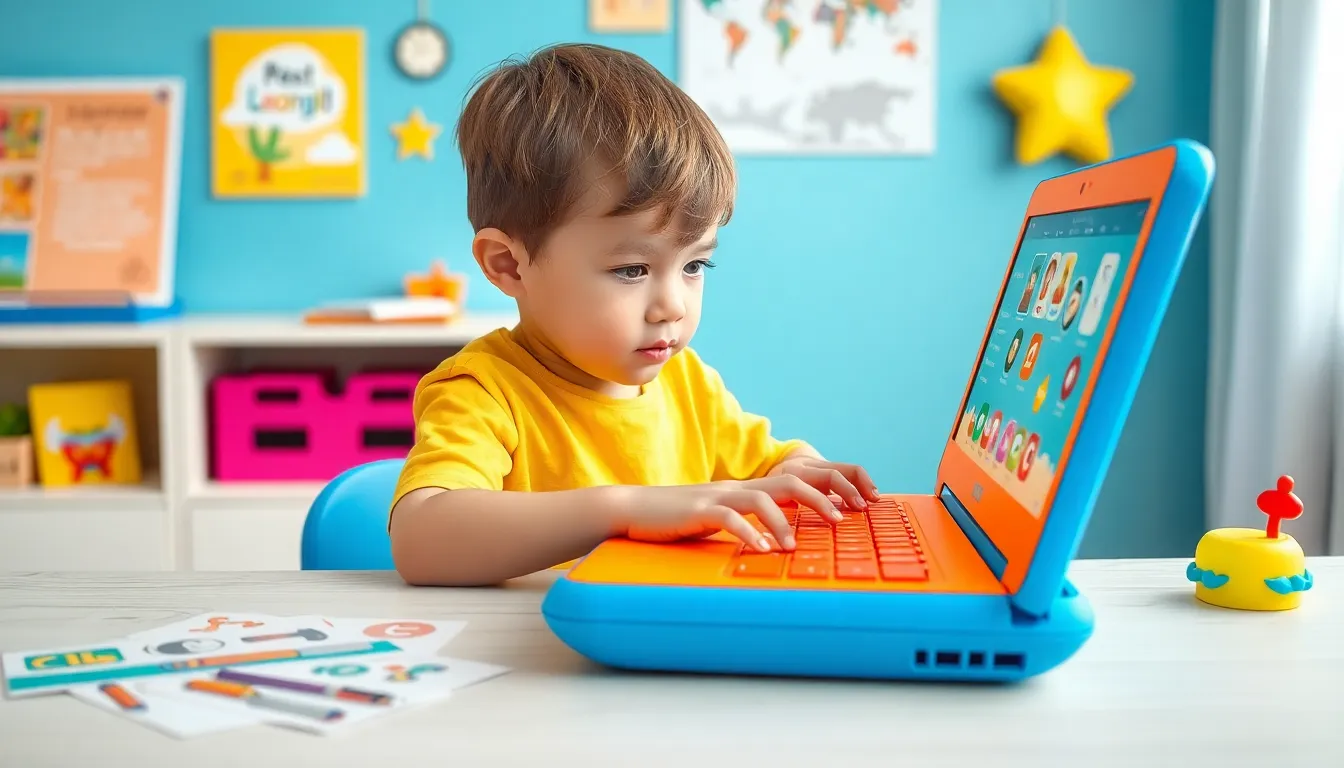
Selecting the right kids’ laptop involves assessing several crucial features. Durability, battery life, performance specifications, and screen size all play significant roles in ensuring a suitable device for children.
Durability and Build Quality
Durability stands out as a primary consideration. Laptops designed for kids often feature reinforced corners and spill-resistant keyboards, ideal for handling accidental drops and spills. Brands like Lenovo and Acer create devices that withstand rough use while maintaining good aesthetics. Striking a balance between weight and sturdiness promotes ease of use and portability for young users.
Battery Life
Battery life impacts daily usability. Parents increasingly seek laptops that support extended hours of activity, ideally lasting over 8 hours on a single charge. Long-lasting batteries keep children engaged without frequent interruptions for recharging. Look for models with efficient power management features, providing the necessary endurance for both school and play.
Performance Specifications
Performance specifications determine how well the laptop tackles various tasks. For everyday use, processors such as Intel Celeron or AMD Ryzen 3 are often sufficient, especially for educational apps and light gaming. At the same time, 4GB to 8GB of RAM enhances multitasking capabilities. Adequate storage, even as low as 32GB for Chromebooks, proves beneficial for storing essential files and documents.
Screen Size and Resolution
Screen size and resolution affect the overall user experience. Laptops with 11 to 14 inches are portable yet large enough for educational tasks. A resolution of at least 1366 x 768 pixels provides clear visuals for streaming and online activities. Touchscreen functionality on some models adds interactivity, making learning engaging and fun.
Top Kids Laptops on the Market
Selecting the right laptop for kids involves identifying models that meet their specific needs. Below are top choices based on age appropriateness, affordability, and performance.
Best for Younger Kids
Chromebooks like the Lenovo Chromebook Duet excel for younger users. Their lightweight design and long battery life of up to 10 hours allow easy transport and extended use. With a 10.1-inch touchscreen, it offers intuitive navigation for kids. The spill-resistant keyboard adds durability, perfect for little hands. Parental controls come pre-installed, ensuring a safe online experience. Another option includes the HP Chromebook 11, known for its robust construction and diverse app accessibility via Google Play. Operating on Chrome OS, it provides a user-friendly interface tailored for educational use.
Best for Older Kids
For older children, the Acer Aspire 5 stands out due to its powerful AMD Ryzen processor. This laptop effectively handles schoolwork, gaming, and multimedia tasks. A full HD display offers clear visuals, enhancing both learning and entertainment experiences. With 8GB of RAM, it supports multitasking without lag. The design features an aluminum body, providing durability while maintaining a sleek appearance. The Asus VivoBook also deserves mention for its lightweight profile and decent battery life. Equipped with a good selection of ports, it accommodates various peripherals and accessories, making it versatile for high schoolers.
Budget-Friendly Options
Affordable laptops cater to parents seeking budget-friendly solutions. The HP Stream 14 is significantly cost-effective, priced below $300. It’s designed with a lightweight chassis and offers smooth performance for basic tasks. For studies and online learning, adequate storage for documents is accessible. Another viable choice is the Lenovo IdeaPad 1. This laptop’s pricing typically ranges from $250 to $400, combining reliable performance and portability. Long battery life supports continuous use throughout the school day. Both options come equipped with essential features, ensuring a solid foundation for children’s education without breaking the bank.
Benefits of Using Kids Laptops
Kids’ laptops offer numerous benefits that enhance learning and overall development. Equipped with educational tools and resources, these devices support a child’s learning journey effectively.
Educational Advantages
Laptops cater to diverse learning styles, providing access to a wide range of digital resources. These devices help children engage with interactive content, such as educational games and online courses. Moreover, kids learn vital digital skills early, preparing them for future academic challenges. Research indicates that interactive learning tools can boost comprehension and retention rates significantly. With the right applications, kids can explore subjects like math, science, and languages at their own pace, fostering a deeper understanding of the material.
Promoting Independence
Using laptops fosters independent learning habits in children. They gain the ability to research topics autonomously, developing critical thinking skills in the process. This self-directed approach to learning encourages responsibility and time management as kids prioritize tasks on their own. Children learn to troubleshoot simple issues, leading to increased confidence in their problem-solving skills. Exposure to various online resources empowers kids to pursue interests beyond the classroom, nurturing a sense of curiosity.
Encouraging Creativity
Laptops serve as creative outlets where children can express themselves through various applications. They can experiment with art programs, music software, and writing tools that inspire innovation. Engaging in these creative tasks can enhance cognitive flexibility and promote emotional well-being. Kids can collaborate on projects online, developing teamwork and communication skills. The ability to create and share content also instills a sense of accomplishment, motivating them to pursue further creative endeavors.
Choosing the right laptop for kids is a significant decision that impacts their educational and creative journeys. Parents should prioritize durability and performance while considering features that enhance both learning and entertainment. By evaluating various options and understanding the unique needs of their children, they can find a device that supports academic success and encourages creative expression.
Investing in a suitable kids’ laptop not only prepares children for their educational pursuits but also fosters independence and critical thinking skills. As technology continues to evolve, having the right tools can empower kids to explore their interests and develop essential skills for the future.

